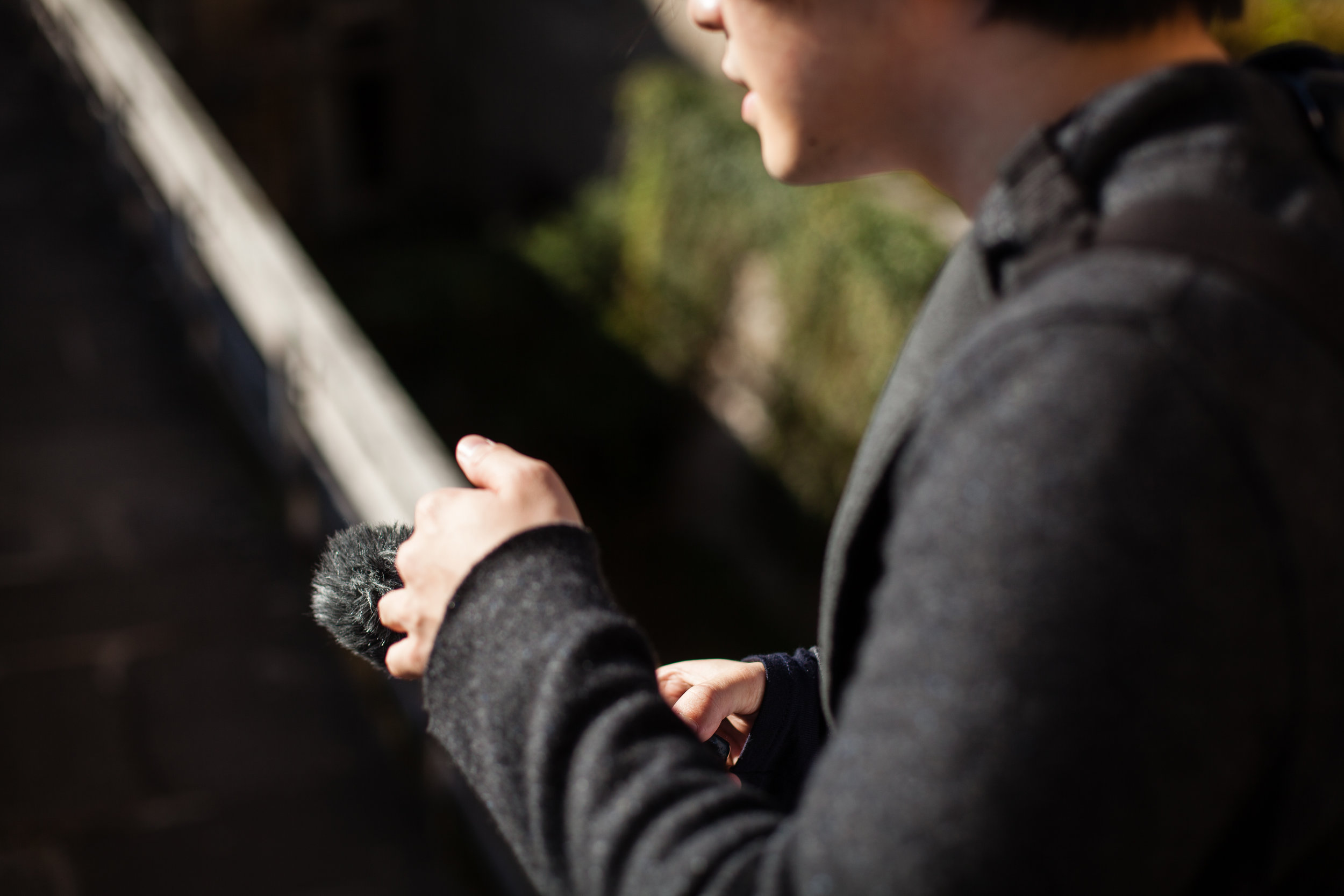



....
Contact Points with Tübingen Soundscape
site-specific audiovisual improvisation
GENERATE!° Festival for Electronic Arts 2017, Shedhalle Tübingen, Tübingen, Germany
2017
..
Contact Points with Tübingen Soundscape
サイトスペシフィック・オーディオビジュアル・即興パフォーマンス
GENERATE!° Festival for Electronic Arts 2017, Shedhalle Tübingen(ドイツ、チュービンゲン)
2017年
....
The recording of the performance..パフォーマンスの録音
....
‘David Lowenthal has written: “Perception of scenery is only open to those who have no real part to play in the landscape.”’ (R. Murray Schafer, 1994, PART FOUR: TOWARD ACOUSTIC DESIGN, FOURTEEN: LISTENING, A Tourist in the Soundscape, para. 5) For this performance, Kakinoki resides in Tübingen for a certain period, and soaks himself in the soundscapes of the city. He fixes the sound objects gathered by walking around Tübingen in audio files, and then curves and fluidifies them into his subjective soundscapes through audiovisual improvisation.
Through the improvisation, the audience sonically experience Kakinoki’s journey into the city. There, the recorded external reality will be abstracted into Kakinoki’s internal responses, imagination and ideal soundscapes. What he attempts to show is not the analytical presentation of the total soundscape of Tübingen, but rather, ‘a sensation, not a finished work of art’, which is ’the “primary process” of making contact with matter’ (Smithson, 1996, p. 103), which was brought by contacting with the soundscapes.
This improvisation is his process of seeking the contact points with the city. The generated visuals indicate his physical intervention in the soundscapes, and the transformations of them. As he manipulates and uses the sounds with his hands during the performance, the contact points would be where the city is embodied and integrated with him, or where his mind and body are absorbed by the city. By referring to Thomas McEvilley, there is the aspect of letting the outside world into the performing space (ibid., p. 158) in this work.
..
David Lowenthalによれば、風景の知覚は、その景色の中に本質的な役割を持たない者にしか開かれていない。(R. Murray Schafer, 1994, PART FOUR: TOWARD ACOUSTIC DESIGN, FOURTEEN: LISTENING, A Tourist in the Soundscape, para. 5)このパフォーマンスのために、Kakinokiはチュービンゲンに一定期間滞在し、都市の音景に自身を浸透させていった。チュービンゲンを歩き回って採取した音をデータとして固定し、それらをオーディオビジュアル即興演奏の中で解体していくことで、主観的な音景を彫り出していく。
即興内で、鑑賞者はKakinokiの旅程を音響的に体験する。そこでは録音された現実世界が、彼の内的な応答、想像、そして理想の音景へと抽象化される。そこで提示されるのは、チュービンゲンの音景分析ではなく、Robert Smithsonが言うところの、対象との接触において最初に発生する作用(1996, p. 103)、つまり音景との接触がもたらした感覚である。それは「完成された作品」(同上)ではない。
言い換えれば、このパフォーマンスは、街との接点を探す過程である。演奏行為から生成される映像は、音景への介入と、音景の変容を示す。自身の手を使って音を抽象化していく接点において、街は作家の身体上で肉体化し、思考と身体は街と混ざり合う。Thomas McEvilleyを引用すれば、この作品には、「パフォーマンスの空間に外界を取り入れる」という観点が存在する。(同上, p.158)
....
....
References
Schafer, R. Murray. The Soundscape: Our Sonic Environment and the Tuning of the World. Kindle. Rochester, VT: Destiny Books, 1993.
Smithson, Robert. The Collected Writings. Edited by Jack Flam. Berkeley: University of California Press, 1996.
..
参考文献
Schafer, R. Murray. The Soundscape: Our Sonic Environment and the Tuning of the World. Kindle. Rochester, VT: Destiny Books, 1993.
Smithson, Robert. The Collected Writings. Edited by Jack Flam. Berkeley: University of California Press, 1996.
....